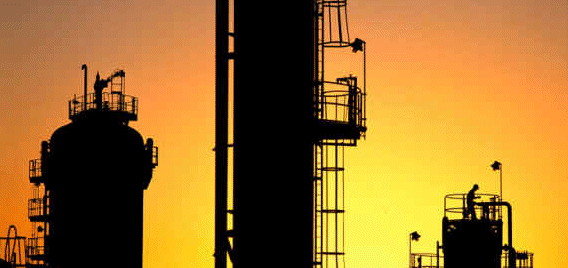Chemical and Process Engineering Resources

Vacuum Distillation
To recover additional distillates from long residue, distillation at reduced pressure and high temperature has to be applied. This vacuum distillation process has become an important chain in maximising the upgrading of crude oil. As distillates, vacuum gas oil, lubricating oils and/or conversion feedstocks are generally produced. The residue from vacuum distillation - short residue - can be used as feedstock for further upgrading, as bitumen feedstock or as fuel component. The technology of vacuum distillation has developed considerably in recent decades. The main objectives have been to maximise the recovery of valuable distillates and to reduce the energy consumption of the units.
At the place where the heated feed is introduced in the vacuum column - called the flash zone - the temperature should be high and the pressure as low as possible to obtain maximum distillate yield. The flash temperature is restricted to about 420 °C, however, in view of the cracking tendency of high-molecular-weight hydrocarbons. Vacuum is maintained with vacuum ejectors and lately also with liquid ring pumps. Lowest achievable vacuum in the flash zone is in the order of 10 mbar.
In the older type high vacuum units the required low hydrocarbon partial pressure in the flash zone could not be achieved without the use of "lifting" steam. The steam acts in a similar manner as the stripping steam of crude distillation units. This type of units is called "wet" units. One of the latest developments in vacuum distillation has been the deep vacuum flashers, in which no steam is required. These "dry" units operate at very low flash zone pressures and low pressure drops over the column internals. For that reason the conventional reflux sections with fractionation trays have been replaced by low pressure- drop spray sections. Cooled reflux is sprayedvia a number of specially designed spray nozzles in the column countercurrent to the up-flowing vapour. This spray of small droplets comes into close contact with the hot vapour, resulting in good heat and mass transfer between the liquid and vapour phase.
To achieve low energy consumption, heat from the circulating refluxes and rundown streams is used to heat up the long residue feed. Surplus heat is used to produce medium and/or low-pressure steam or is exported to another process unit (via heat integration). The direct fuel consumption of a modern high-vacuum unit is approximately 1% on intake, depending on the quality of the feed. The steam consumption of the dry high-vacuum units is significantly lower than that of the "wet" units. They have become net producers of steam instead of steam consumers.
Three types of high-vacuum units for long residue upgrading have been developed for commercial application:
- FEED PREPARATION UNITS
- LUBOIL HIGH- VACUUM UNITS
- HIGH - VACUUM UNITS FOR BITUMEN PRODUCTION
Feed Preparation Units
These units make a major contribution to deep conversion upgrading ("cutting deep in the barrel"). They produce distillate feedstocks for further upgrading in catalytic crackers, hydrocrackers and thermal crackers. To obtain an optimum waxy distillate quality a wash oil section is installed between feed flash zone and waxy distillate draw-off. The wash oil produced is used as fuel component or recycled to feed. The flashed residue (short residue) is cooled by heat exchange against long residue feed. A slipstream of this cooled short residue is returned to the bottom of the high-vacuum column as quench to minimise cracking (maintain low bottom temperature).
Luboil High Vacuum Units
Luboil high vacuum units are specifically designed to produce high-quality distillate fractions for luboil manufacturing. Special precautions are therefore taken to prevent thermal degradation of the distillates produced. The units are of the "wet" type. Normally, three sharply fractionated distillates are produced (spindle oil, light machine oil and medium machine oil). Cutpoints between those fractions are typically controlled on their viscosity quality. Spindle oil and light machine oil are subsequently steam- stripped in dedicated strippers. The distillates are further processed to produce lubricating base oil. Short residue is normally used as feedstock for the solvent de-asphalting process to produce deasphalted oil, an intermediate for bright stock manufacturing.
High Vacuum Units for Bitumen Production
Special vacuum flashers have been designed to produce straight-run bitumen and/or feedstocks for bitumen blowing. In principle, these units are designed on the same basis as the previously discussed feed preparation units, which may also be used to provide feedstocks for bitumen manufacturing.

 FB
FB

7 Comments
Thank u Sir !
Great article to understand the functions of whole refinery, !!